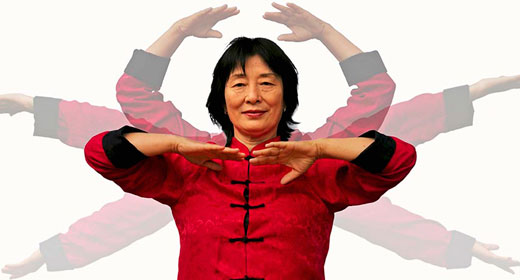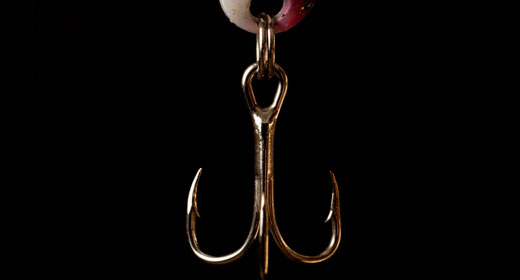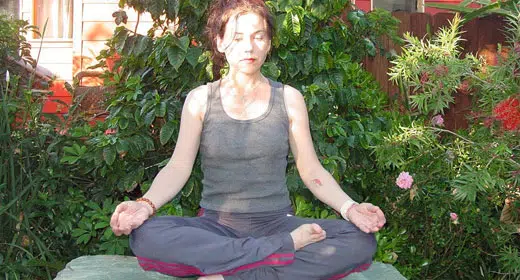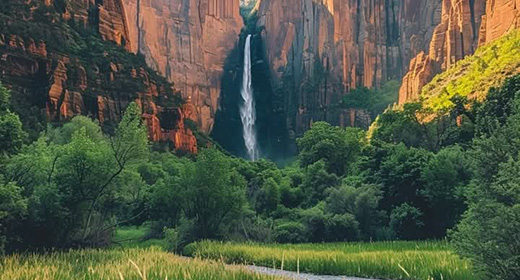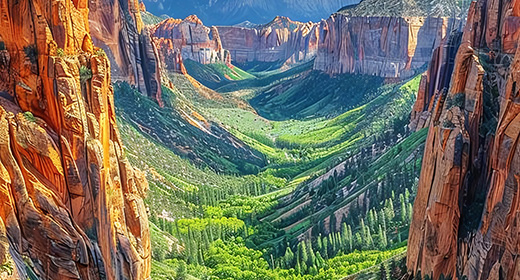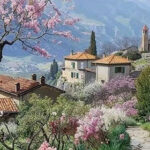by Anna Hezel: Chefs Sean Sherman and Nico Vera talk about some of the advanced agricultural systems, trade routes, and cooking techniques that unite a precolonial food history across both North and South America…
About two years ago, when writer, photographer, and chef Nico Vera decided to become vegan, he started to think about how he could still celebrate the rich Peruvian food culture that he grew up with, replete with its beef heart anticuchos and potatoes bathed in cheesy sauces. Yet after a bit of historical research, Vera realized that the diet of his Incan ancestors was actually pretty plant-forward, with its focus on corn, tomatoes, quinoa, and plenty of foraged herbs rather than animal products.
But it was after digging into this history even further for a vegan-Peruvian cookbook he’s developing that Vera started to realize Peru’s precolonization agricultural practices and eating habits were not so different from those of Indigenous people in the United States, where he’s spent most of his adult life. As part of TASTE’s “In Conversation” interview series, Vera sat down to talk about some of these connections with chef and author Sean Sherman. Sherman, who is Oglala Lakota and was born in Pine Ridge, South Dakota, is the founder of The Sioux Chef and NATIFS (North American Traditional Indigenous Food Systems), a Minnesota-based nonprofit with a mission of revitalizing the cuisine that’s native to North America.
From their respective homes in Portland, Oregon, and Minneapolis, Minnesota, Vera and Sherman discussed how the histories of these Indigenous cuisines might shape the future of sustainable, community-based food systems, and what a collaborative meal that brings together their Indigenous cultures might look like.
Nico Vera: Do you want to start with a little bit about what Indigenous food systems were like before colonization?
Sean Sherman: It’s just understanding some of the origins of who and where we came from and how our ancestors were living. For a modern day, it’s relevant because, when you look at a modern Indigenous food system, or if you break down what wasn’t Indigenous, what was and is an Indigenous food system in the simplest form, it’s really just a community-based regional food system. So it was an entire community effort, to be able to maintain a yearly supply of nutritional foods, to be able to survive as a whole. And we feel like there’s a lot of relevance in that right now, especially as most of the world has been kind of under this colonized, capitalistic—imperialistic, even—state of mind.
We feel like, if we can utilize Indigenous communities as role models, we can really showcase the value of a lot of this cultural and traditional work that’s been done in maintaining our livelihood by being able to supply ourselves with our ancestral foods. So, whether we’re harvesting wild foods or helping the land around us to grow these wild foods, or we’re utilizing agricultural practices to grow specific domesticated plants, it’s just really important to see the value in that.
And everybody was doing something that led into that community food system. So you’re harvesting foods, growing foods, you’re building tools to do those things, you’re hunting or fishing. You’re preserving those foods, and you’re teaching the next generation all the knowledge they need to be able to do those foods. That’s just the basis of what a food system looks like. So you can apply that knowledge anywhere around the world.
Nico: Yeah. Wow. So, for my part, when I think about the time before colonization, before the Spanish conquistadors arrived in the Americas, and specifically in South America and Peru, when I think about the Indigenous food systems there, my strongest connection, of course, is with the Inca people. So I think a little bit about, “What ingredients did they cook with?” The main ingredients they cooked with were plant-based, like you said. They cooked with corn, with maize, they cooked with quinoa and potatoes and tomatoes and hot peppers, a lot of wild plants, like huacatay, a local wild mint. They had coca leaves and, of course, beans, squash, and so on. Also some animals, like alpaca and river fish and ocean fish, but a large part of their community was farm-based.
They practiced harvesting, with seasonality. They marked the solstice; they worshiped the sun god, Inti. In the Andes mountains, the leveled the inclines with terraces and had irrigation systems, so they could take advantage of otherwise inaccessible land. They prayed to the mountain god Apu to yield them a good harvest. But that was not enough. They also had to have storage—storage and preservation techniques—so that when they didn’t have a good harvest, they could still feed their community. So they had techniques like making chuño, which is the freeze-dried potatoes from the Andes. Because of the high elevation, you have extreme temperature differentials: You have very, very cold nights and a lot of sun during the day. So that alternating process of dehydrating and freezing extracts the water and transforms the potato into chuño, something that has a shelf life of ten years. They did something similar with dried meat, charqui. Like you said, a lot of it is largely community-based and plant-based.
Sean: And regional. So, of course, as far as all the wild foods around us, it’s just like that knowledge of all the trees, of all the tubers, of all the greens, and all these seasonings that we have that are part of our environment. And our Indigenous communities spent thousands of generations gaining knowledge to be able to utilize an extremely diverse food system, which was highly nutritional, highly plant diverse.
Our Indigenous communities spent thousands of generations gaining knowledge to be able to utilize an extremely diverse food system, which was highly nutritional, highly plant diverse.
It’s really interesting to trace the routes of how some of these agricultural pieces have spread across the Americas, you know, before colonialism. We look at how corn culture starts, from the bottom of Mexico. And it shoots all throughout almost all of what is Mexico today, across the entire Caribbean, spanning throughout that whole region, moving up into the Southeast—you can basically see how the Mayans helped spread it all over the place and bring it with them. And then you see it crawl up the entire Eastern Seaboard, up into parts of Canada. You see it going all the way up to Mississippi and Missouri river valleys, way up into these Great Lakes regions.
There was this mass spread of Indigenous agriculture that is largely un-talked-about in US history books today. The US history books reframe this as kind of open, unattended land space, that is America until the colonists come here and put up beautiful farms, right? And that’s obviously not the way it is, because we still have an immense amount of Indigeneity alive today, because there’s 574 federally recognized tribes in the United States. And there’s quite a few more that aren’t on that list. And 622 up in Canada, and 20 percent of Mexico identifying as Indigenous. So it’s really important to understand a lot of those histories of how food moved around, and not just through the slave and trade systems that the colonizers had set up.
But there were precolonial trade routes all over the place. And, of course, in your regions, there’s such great documentation about the mass of highways that were built across the Andes, and just the advancement that was going on across the Incan Empire in that time period. And then the same thing was going on in Mexico with the Nahuas and the Mayans.
Nico: Yeah, absolutely. And it’s interesting that you mentioned Mexico here and the precolonial foodways, because it reminds me of the avocado, right? The avocado is native to Mexico, Central America. But precolonial, the Incas had the avocado—it came through, I believe, Ecuador—there’s a tribe there called the Paltas, and they introduced it to the Inca food. And that’s where we picked up the name. We don’t call it “avocado,” or the Spanish “aguacate,” we call it “palta.” So, yeah, there are definitely foodways that spread in the Americas. That brings us to the next question: How did colonization change these food systems? What happened once they arrived?
Sean: Yeah, and I always think it’s important that people understand the term “colonization” in general, off the bat, because it helps set the precedent for what happens. Colonization is the policy or practice of acquiring full or partial political control over other countries, occupying it with settlers and exploiting it economically. Basically, taking all the natural resources that might be valuable to the colonizers that aren’t necessarily valuable to the people living there in the same sense. So we look at the mass destruction of forest areas across the United States as an example; you look at a lot of the mines that have started—because, you know, Indigenous peoples could care less if they’re sitting on top of a diamond mine. What’s more important is upkeeping these really delicate food systems that were created and maintained first for centuries and millennia, depending on where they were.
Where there’s going to be a lot of destruction, there is going to be a lot of loss of culture. There’s going to be a lot of bringing in different plant species or wiping away animal species or insects or birds, or whatever it might be. There’s just an immense amount of human disruption that happens during colonization. You don’t have to dig very deep to see the effects of colonization. We obviously still live in a world—especially here in the United States—that’s living in such unspoken privilege as a result of this colonization, where so many families have generational wealth because of land ownership, or homes or businesses or whatever it might’ve been, that their forefathers gave to them, basically as a direct result of this colonization.
And on the reverse side, we see a lot of ancestral trauma, because of Indigenous peoples being treated the way we’ve been treated and the oppression that happens across the board. And the loss of so much—the loss of so many cultures, the loss of so many languages, and the loss of so many foodways. So our work, especially with our nonprofit, is really trying to understand Indigenous food systems, and trying to understand paths and how to bring them back. We see the culinary piece as really important for that, because it helps us connect with these foods by learning how to cook with them again and learning how to identify them and find them. And then it gives us an opportunity to be more curious, or to help other people become curious, so that we can find paths to grow more of these plant species that we need in our cultural diets. So, whether it’s agricultural practices or permacultural practices, it’s really important that we try to find that path through colonization to bring back a sense of honor to our ancestors.
I grew up with the traditional Peruvian food, comida criolla, the creole dishes. And as much as I love all that food, I have to acknowledge that it’s a product of colonization, right?
Nico: When I think about how colonization changed the food systems of Peru in South America, I think about the food I grew up with. I grew up with the traditional Peruvian food, comida criolla, the creole dishes. And as much as I love all that food, I have to acknowledge that it’s a product of colonization, right? Because if you look at the history of Peru, prior to the colonization, we have the Inca food systems with the Inca foods. And when the Spanish arrived, they brought new ingredients. So that changed, that transformed a lot of the dishes and created some new ones, but they also brought African slaves. And that, again, changed the culinary landscape, because now you have different cooks, different styles, and different techniques coming into play here. Once slavery was abolished, there’s still a need for labor.
And that brought indentured workers from Asia—at first Chinese workers, and then Japanese workers. So essentially that created, over a period of about 500 years, a culinary fusion, starting with the Inca and Spanish, African, Chinese, and Japanese food cultures. But it all began, it all started, because of colonization. So even though that’s an important part of my culture, I need to acknowledge the cost. What’s the price that you paid in order to get to this? If I were to look at a specific example: ceviche. Ceviche is essentially fish cured in acid. And that’s an ancestral Inca dish. They cooked it for a long time with the jungle citrus called tumbo and hot peppers.
But then, when the Spanish arrived, they introduced limes, introduced onions. So then the dish changed. Limes have higher acidity, so the dish cooks faster. So that dish transformed over time. So you could say that colonization affected how a traditional dish came to be, and how we have it now, traditionally. So one perspective I have is that colonization created these new foods. But you have to recognize also the cost—communities that were wiped out, slavery, the loss of different plant systems, and so on. That’s also something I’m looking at now, to try to recover. So I guess that brings us to our next question. What does the future hold for Indigenous food systems?
Sean: Well, first off we have to figure out, how do we find a connection to our ancestors? And I think one of the easiest ways to do that is through the food. Part of that is really taking the time to reconnect ourselves with our land spaces, especially if we are still on the land spaces of our ancestors, because that knowledge of the natural world around us, with all the different uses of the plants around us, taking the time to really have a strong cultural ethnobotanical study, education is only gonna help us. And I think that’s a really important step—just relearning the world around us, because we can help to reconnect a lot of broken knowledge, just by starting to recover what our ancestors knew about the world around them, which is that every plant out there has a purpose and a use.
And then it’s looking at what pieces have been able to survive colonization. And, of course, what kind of staples are the heirloom varietals of corn, or other products out there that we can really put a lot of emphasis on? Because, as we know, a lot of these very particular heirloom varietals come from very particular peoples in very particular regions.
So it’s going to be really important that we understand we have to be the stewards. It’s our generation that has to be the stewards of all these pieces, because nobody else is going to do it.
And they’re in dire danger, because we know that there are these giant chemical seed companies out there, doing everything they can to get their hands on every single seed that’s out there, and they’ve done a really good job. They own over half the seeds in the world as of today. And it’s really important that we allow Indigenous communities, especially where they still have some of these heirloom varietals, to be the true stewards of those seeds, and to respect that and be able to hold that up and protect that.
And I think in other instances, just looking at the diversity of Indigenous agriculture that’s been out there, and all these diverse ways that Indigenous peoples have figured out how to maintain agricultural systems, precolonization, is important. And we need to attempt to move toward that, because those true organic, regional farming practices are really important—because, again, people have had hundreds, if not thousands, of years to try and figure out best practices, and they were very conscious about any damage to the surrounding areas.
Whereas the modern and industrial farming practices takes very little concern of the field, the crop, and right outside their barbed wire fence—let alone what kind of chemicals are getting into the soil or waterways and dripping into communities and getting directly into people’s homes. They’ll have to be able to have these food systems that can mimic Indigenous food systems for the future, I feel like, because we still live in this extremely diverse world today, where there’s a lot of communities out there. We look at the countries, the way they’re set up today, and a lot of them make very little effort to think about the Indigenous diversity that they should be the stewards of.
We need a lot more culinary resources and kitchens and trained people to be able to harvest these foods, process these foods, preserve these foods, and turn these foods into pantry items to be able to meet the food needs of our communities all across the board.
Nico: When I think of the future of Indigenous food systems in Peru, one of the things you said about your local environment comes to mind, and that is how some cooks are working a lot at foraging now. So even restaurant chefs [like Virgilio Martinez] are not necessarily trying to re-create an Inca dish or an African dish or a Chinese dish. They just work at different elevations across Peru, starting at the coast and the Andes mountains, and then the jungle, and in a very small local environment, they look at foraging hyperlocal ingredients, and they make a dish from that ecosystem. And then they move on to a different elevation and do the same thing. So you’re essentially creating dishes from what that micro garden offers, whether it’s sea level or a high elevation or the jungle.
And then you can really see the harmony between the ingredients. It’s almost like you’re eating in situ, at that place, because everything there is going to be connected. But having said that, there’s a lot of challenges for the future of Indigenous food systems and Peru because of climate change. The extreme temperatures and the melting glaciers are a challenge for crops now, where they weren’t in the past. So if that’s going to affect the crops, that’s going to affect the sustainability of community. One positive trend I’ve seen is more cooks in Lima, in the city that’s the culinary capital of Peru, be more connected to producers in the mountains. So, once you establish these connections, there’s more visibility of what the producers are doing, of their needs.
For example, a couple years ago, I met a wine producer in the Andes mountains. Of course, their main goal is to harvest grapes and produce wine, but they also wanted to give back to the communities. So they give a chance to the local workers to do some harvesting and also work on their own crops, whether it’s grapes or something else that that will sustain the community. So being involved in the community is going to be the key for future growth, I believe.
Sean: Absolutely.
Nico: Maybe we can talk a little bit now about the Indigenous native ingredients and cooking techniques that make each of our cultures unique but also similar.
Sean: Well, you know, since I’m based in Minneapolis right now, this isn’t my ancestral homeland, necessarily. I’m in Minneapolis, which is Dakota homeland, and we have set up a lot of our businesses right here. I grew up on Pine Ridge Reservation, and my Oglala Lakota family, primarily before colonization, up until the late 1800s, were living more over in Wyoming, toward the Bighorn Mountains, and they had a pretty large area that they moved around within. It’s a pretty vast area.
Here in Minneapolis, in Minnesota, we really just try to make Indigenous foods taste like where we are, so we focus on regional Indigenous foods. And my work has taken me out all over the nation, so I’ve been able to experiment with flavors and work with other communities all across the United States, and parts of Canada, even Alaska. And, of course, down in Mexico, it’s the same mindset—just focusing on where we are and really trying to make food taste like where we are, utilizing this Indigenous perspective. Here in Minnesota and the Great Lakes region, we’re lucky that we have this true wild rice that grows on these Great Lakes here. And a lot of the tribal communities still utilize this and celebrate that piece heavily.
We’ve got very long winters. Winter breaks, and maple season is the first thing that kind of kicks us off, because the maple trees will start running sap. The sap harvest is such a big thing, and there are other trees that we can tap, like birch and boxelder and black walnut, here in Minnesota. The tree tappings go on for a little while—a lot of groups will cook the sap down right into syrup, of course, and even break it down further into sugar, which is pretty simple. And then we have this huge bounty of natural sugar to last through most of the rest of the year. And then, right after that, all spring vegetables come out, which is the time frame we’re in right now, here in Minneapolis
All sorts of things, like sprouts and fiddlehead ferns and ramps and mushrooms, are starting to come out. So many wild edibles are coming out of the ground now. Plus, all the trees are in blossom. All the apple blossoms and elderflower blossoms and chokecherry blossoms, all these blossoms, are out—and the spruce tips. Then we just kind of go through this whole season of amazing growth, you know, through these really beautiful forests. And there’s just so much food out there. We see all these berries come through, different kinds of fruits, different kinds of tubers and wild onions and wild gingers, and all sorts of amazing flavors around us, and then in the agricultural sense, right now, we’re all so busy getting a lot of stuff in the ground or getting ready to get stuff from the ground.
I think that’s the modern Indigenous perspective—to have that love of these plants.
We’ll see things like different varietals of corns, different varietals of beans, different varietals of squash, sunflower seeds, on top of a lot of non-Indigenous plant species, of course, because, you know, vegetables are great. And I think that’s the modern Indigenous perspective—to have that love of these plants. So it’s totally okay to have non-Indigenous pieces in your diet, as long as you’re maintaining this kind of Indigenous perspective, even when it’s very plant-forward. So, you know, for us, we cut out things like dairy, wheat, flour, cane sugar, beef, pork, and chicken, because those ingredients didn’t exist here before colonization. And we’re able to showcase a lot of other amazing flavors that don’t utilize those ingredients, and create tons of recipes around that.
Nico: So, since we met four years ago—back then, I was teaching traditional Peruvian food—there have been a lot of changes for me personally. One is that I turned vegan. So I’m definitely looking more at plants for cooking, and while researching more about my Inca ancestors, I was reminded that that was their diet. They were predominantly farmers and grew the crops that we talked about, like the corn and the quinoa and the potatoes and tomatoes, and so much more. They had everything they needed to have strong nutrition through their community farming techniques. And one of the cooking techniques I found the most interesting (also the most natural from an Indigenous perspective) was the pachamanca. It’s like the clambake. In the Andes mountains, they dig a hole in the earth. They put hot stones in the ground and then different layers of ingredients that they cover with dirt and then slow cook.
Sean: And you find that method all across everywhere, you know? It’s a very ancestral cooking method for so many people, whether you’re in New Zealand with the Maori, or in Hawaii, or Southeast Asia, or all over the place. Even up here, you find up in North America the same situation of those underground ovens.
Nico: Absolutely, yeah. When I haven’t been able to do that practically in a cooking school, it was important to me to educate students and home cooks about these ancestral cooking techniques. So we did something similar, just with the stovetop pot, with the layering of the ingredients, at a cooking class a few years ago. But beyond the technique, what I wanted to convey to the students is the respect, the connection that our ancestors had and have with Pachamama, with Mother Earth, right? And whenever they uncovered this pachamanca from the earth, they always present an offering, whether it’s a coca leaf or fermented corn chicha beer that they poured on the ground. I remember that, in that class a few years ago, I took the students outside of the classroom, into the city sidewalk street, where there was a tree, and we poured an offering onto the earth to thank Pachamama for her bounty.
So that’s one way I’m trying to connect with my ancestors and educate cooks about Indigenous food systems, by looking at these traditions from a cooking perspective, but also the connections that our people have with the earth.
I thought we could finish, in the last few minutes that we have, by just brainstorming. Once we do get a chance to cook together, what might we come up with? What could we cook that could honor both our cultures, and bring our cultures together through food?
Sean: Well, I think it’d be a lot of fun to tie some of the pieces we both have and celebrate. So if you have some corn product that is meaningful to you, we have wild potatoes that we’ve utilized—not the same as the amazing diversity of domesticated potatoes you have down there, but still, it’s a tie-in, so it’s very possible to just have fun with some of those flavor profiles and be able to come up with some interesting pieces that showcase the immensity of this diversity, and how some of these pieces tie such huge regions together. I think we could have a lot of fun, bringing some interesting flavors from both the regions, and showing corn in two different ways or potato in two different ways, and really utilizing foods and flavors and combinations that reflect those very specific regions.
Nico: I envisioned something like perhaps a wild rice and quinoa bowl with some plants in there. Maybe, like you said, potatoes cooked in different ways. One could be in an earthen oven style, and another could be in a different technique. I always like cooking with hot peppers. So, if we were to feed a large group of people, imagine large bowls of soup with different ingredients, something spicy that was slow-cooked. What about something sweet? Is there something that is traditional?
Sean: Well, we utilize a lot of fruit, of course, so there’s a lot of berries. We utilize a lot of maple sugar, and there’s a lot of fun stuff we can do with that. We’ve created tons of different recipes using a sunflower base as kind of a dough to make pastry items and baked items and stuff like that. And even making maple-sweetened squash puree, which also has a high sugar content, so it fits in with that dessert-style spot. There are lots of dessert things we can play with. We’ve done chia seed puddings and those kinds of pieces, too.
Nico: Wow. Do you have any questions for me, anything that I haven’t covered?
Sean: I’m just looking forward to the pandemic lightening up. We can kind of barely see through the other side of it a little bit at this point, finally, after a year of it. We’re excited that we’ve had so much growth over this last year, with our Indigenous food lab up and going, so we have a place for research and development.
And, you know, with our restaurant, we’ll be able to bring in some guest chefs and guest speakers and be able to do these focus dinners down the road. We’re planning on doing a dinner series throughout the winter months here, which aren’t the most pleasant months, but it’s a good time for us to huddle together around the stove and come up with a lot of fun things, you know? At some point, we’ll get you over to Minneapolis, and we can do one of those joint dinners at the new restaurant downtown and explore.
Nico: Between you and me, we could probably come up with a really interesting menu for people to discover or rediscover and reconnect with Indigenous food cultures from North and South America. And that would be a beautiful thing.
Sean: That would be awesome.
Nico: So great to see you and talk to you after the few years that I was back in Minneapolis. It feels like it’s been so long, as I’m sure for you, too, one year feels like five years, because of everything that’s happened. All the changes in the world.
Sean: So much going on. Yeah, this last year has been crazy, especially in Minneapolis with the George Floyd incident, all these things that were going on. It’s been a crazy, crazy year, and we’ve been super busy. We were pumping out 10,000 meals a week out of our food lab kitchen, sending healthy Indigenous food right up directly to the tribal communities all around the state. It’s been a crazy year.
Nico: A few years ago, when I still lived in California, at the cooking school that I worked at, we brought a whole bunch of people together to cook meals for people that had been displaced and lost their homes because of the fires. So I appreciate the importance of how food can be healing for those who are suffering for whatever reason. Part of what I admire about you is how you’re cooking for that as well, so thank you.
Sean: Yeah, there’s a lot of work to do out there.


